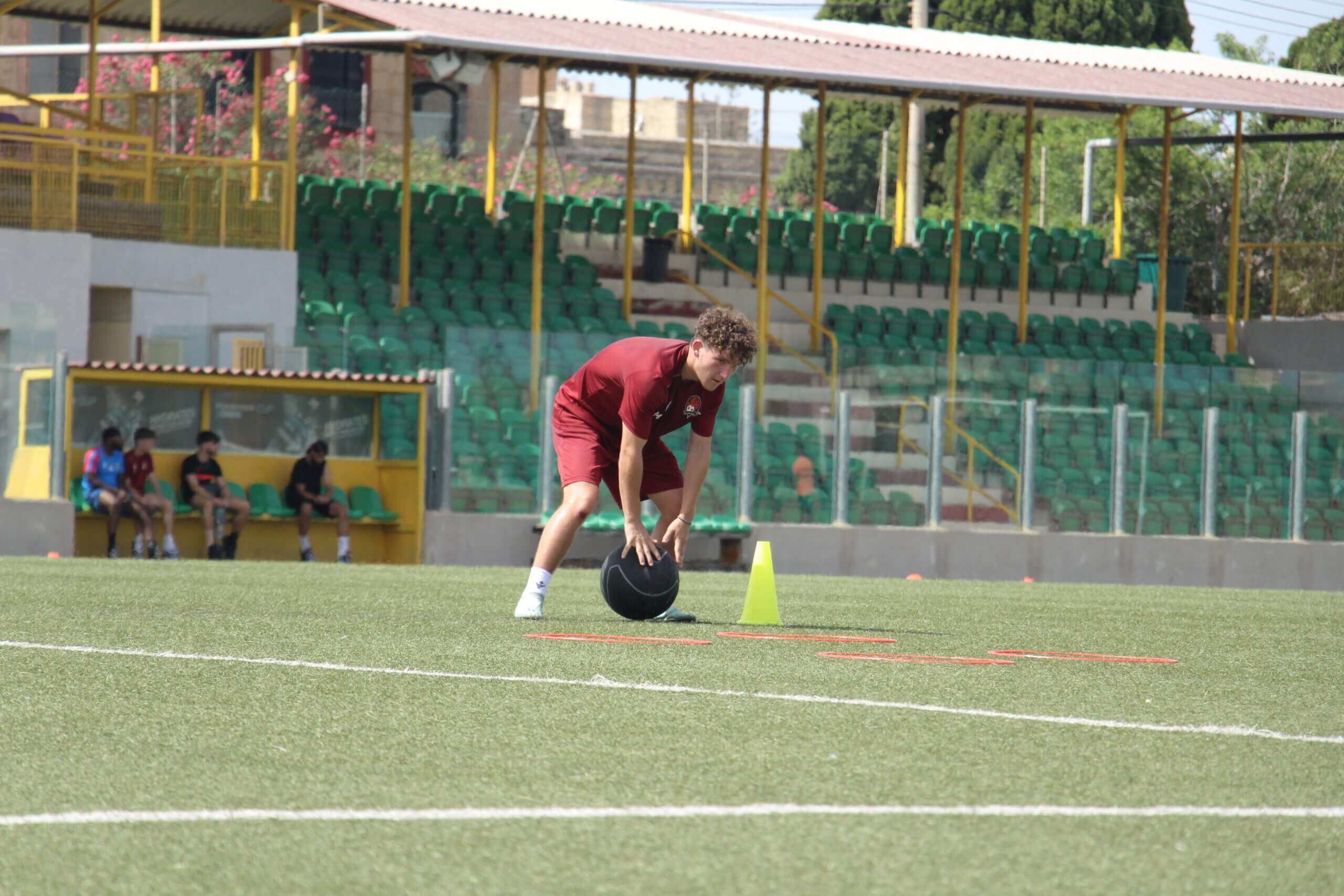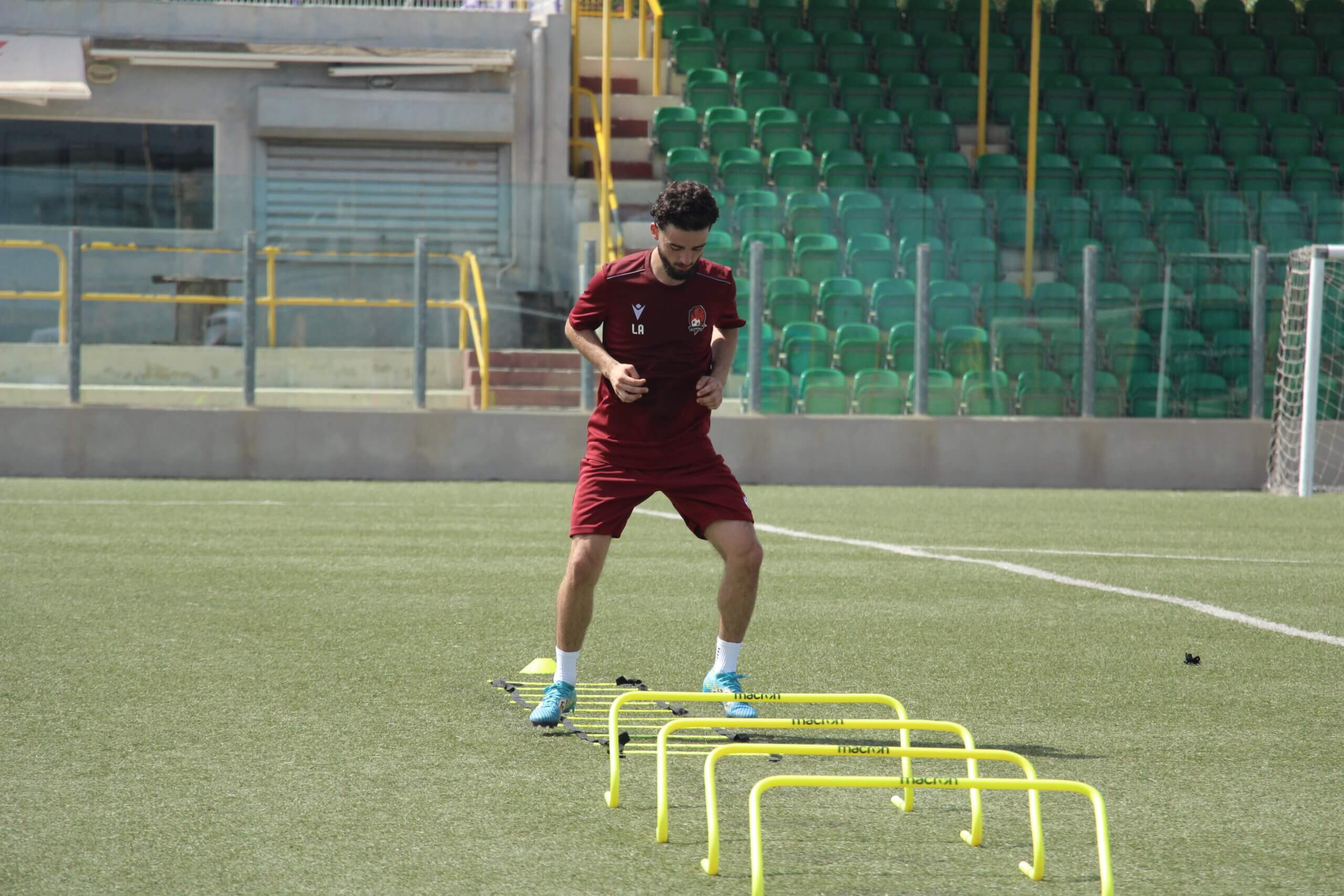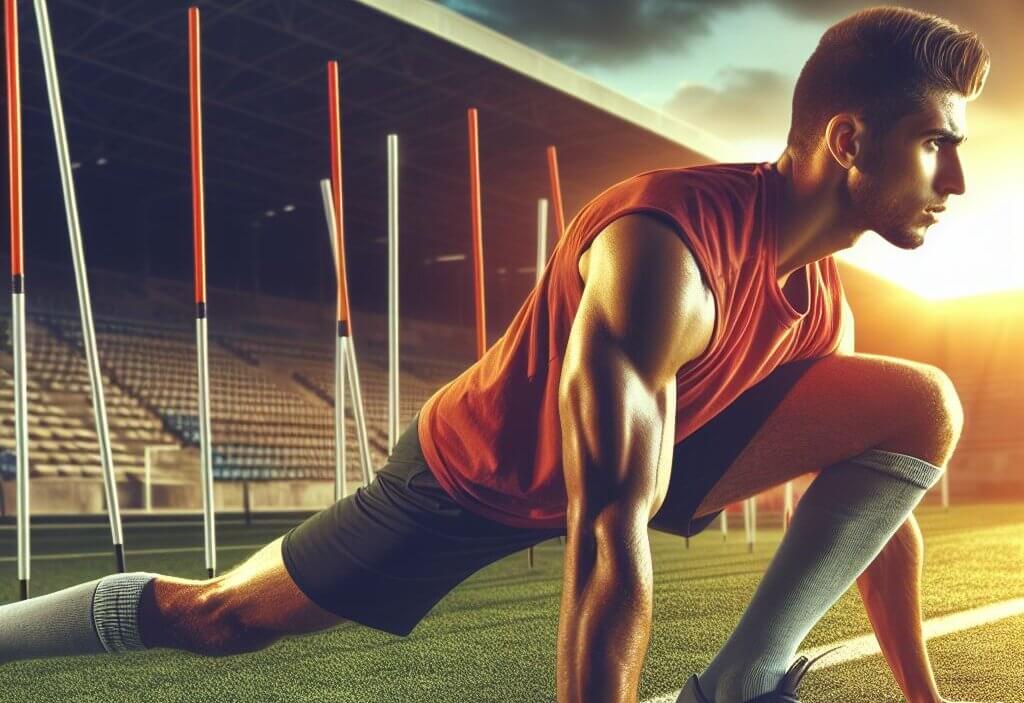Football is a dynamic sport that requires players to perform at high physical levels. Physical preparation in football is a crucial aspect that often determines a team’s success, or lack thereof.
In this article, we look at the subtleties of physical preparation for football players and the challenges they face on the pitch.
Summary
ToggleWhat is physical preparation for football?
Physical preparation for football is a set of exercises and methods to improve physical capacity football players.
It includes aspects such as strength, speed, endurance, coordination, flexibility, recovery and injury prevention.
Physical preparation for football is tailored to the specific needs of each station, of each level and each period of the season.
It is essential for optimising performance, to reduce the risk of injury and maintain good physical condition throughout the year.
The importance of physical preparation in football
Physical preparation is an essential element in football. It allows players to enhance their performance, prevent injuries, and adapt to the demands of the game.
Football is a sport that requires a great deal of physical skill. These skills need to be developed in a way that is specific and adapted to the position, to the level and objectives of each player.
Physical preparation must also take into account tactical, technical and mental aspects of football, as well as environmental factors, these include climate, terrain and sometimes even altitude.
It must be planned over the long term, respecting load and recovery cycles, and incorporating regular testing and evaluation.
It must also be individualised and progressive, taking into account the needs, abilities and limitations of each player.
Physical preparation must be varied and fun, using a variety of motivating exercises.
In addition, physical preparation is a determining factor in the success of a football player.

Training adapted to physical preparation for football
Physical training adapted to football is essential for optimise player performance and prevent injuries. Here is an example of a specific training protocol designed to develop the physical qualities needed for this sport.
Specific training protocol
Specific training consists of reproducing real game situations, taking into account the characteristics of the pitch, the ball, the opponents and the team-mates.
The aim is to harness driving and technical skills specific to football. The specific training protocol can be broken down into three phases:
1. Warming up: It prepares the body for exercise, reduces the risk of injury and improves performance. It should be progressive, varied and adapted to the session. It can include exercises to improve joint mobility, coordination, balance, muscle strength, speed and technique.
2. The body of the session: This is the main part of training, where we work on specific football objectives. It can include exercises in ball retention, attacking and defensive transition, finishing, reduced play, etc. Care must be taken to respect the principles of intensity, variety, complexity and fun.
3. A return to calm: It helps to promote recovery, release muscular tension and prevent muscle soreness. It can include stretching, breathing, relaxation and massage exercises.
Exercises to improve endurance, speed and power
Endurance, speed and power are the physical qualities that are essential for football. They enable you to sustain the effort throughout the match, accelerate, change direction, jump and strike.
Here are some examples of exercises to develop them:
For endurance: short or long splits, circuit training, themed games.
For speed: short or long sprints, work on hills or stairs, running with resistance or assistance, visual or auditory reactions.
For power: plyometrics, leaping, high jump or long jump, work with additional loads or elastic.
Targeted muscle strengthening
Targeted muscle strengthening strengthens the muscles involved in football, particularly those of the lower limbs, trunk and shoulders.
It helps to improve joint stability, posture, strength and shock resistance. Here are a few examples of how to do it:
For the lower limbs: squats, lunges, leg extensions, leg curls, heel raises.
For the trunk: abdominals, back muscles, obliques, ventral or lateral sheathing.
For the shoulders: push-ups, dips, lateral or frontal raises, horizontal or vertical pull-ups.

Managing physical preparation for football
Managing physical preparation in football is an essential aspect of optimising player performance and preventing injury. A number of factors need to be taken into account, such as progression and adaptation to the level of the players, recovery time, nutrition and hydration.
Progression and adaptation to the level of the players
Progression and adaptation to the level of players involves adapt the load and intensity training sessions according to each player's fitness level, objectives and needs.
It is important to avoid overloading or underloading players, which could be detrimental to their development or motivation. The principles of overcompensation, specificity and variety.
Recovery time
Recovery time is the time needed for the player to return to his or her initial state after an effort. It depends on a number of factors, such as the duration and intensity of the effort, the level of fatigue, stress, sleep, etc.
It is important to allow sufficient recovery time between each training session and between each match, to allow players to regenerate their physical and mental resources.
Nutrition & Hydration
Nutrition and hydration are key elements to ensure good physical preparation for football. You need to adopt a diet balanced, varied and appropriate the player's energy needs.
You also need to keep properly hydrated before, during and after exercise, to avoid dehydration, which can lead to reduced performance, cramps, injuries and digestive problems.
Conclusion
In short, physical preparation for football is much more than a simple exercise routine. It's a a subtle art combining science, adaptation and perseverance.
Players need to work on their strength, speed, endurance and coordinationBut they also need to be aware of the specifics of their position and the demands of the game.
Also, physical preparation is not not limited to the land. It covers mental and environmental factors, such as stress management, climate adaptation and recovery. Every player is unique, and preparation must be tailored to maximise performance and minimise the risk of injury.
Ultimately, a physically well-prepared team is better equipped to face the challenges of football. So, whether on the pitch or under the floodlights, let us never forget the importance of physical preparation in this exciting sport!

